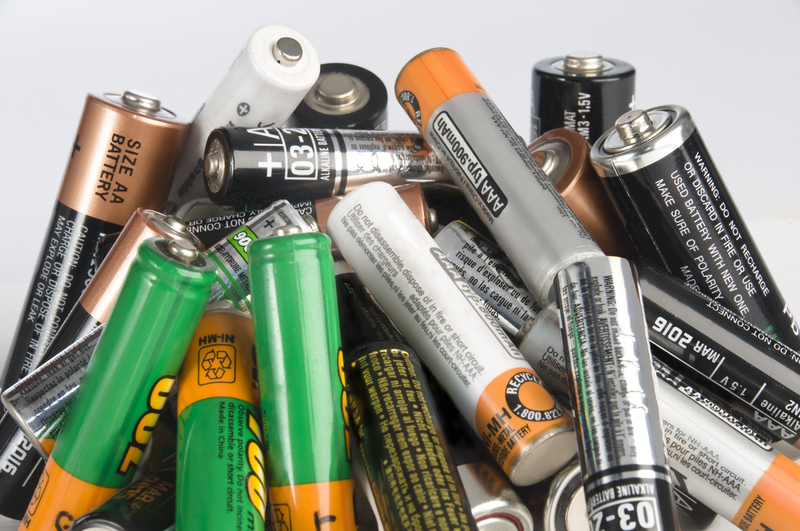How to Make Sure Your PPE Waste Is Handled Responsibly
In the modern world, the use of Personal Protective Equipment (PPE) has become an essential part of daily life in various industries and even in the general public, especially in response to health crises. While PPE such as gloves, masks, gowns, and face shields play a vital role in protecting individuals from hazards and pathogens, the massive increase in their use has led to a surge in PPE waste. Ensuring that PPE waste is handled responsibly is crucial not only for environmental sustainability but also for human health and community well-being. In this comprehensive guide, we'll explore the best ways to manage, dispose of, and recycle PPE responsibly, helping you and your business reduce environmental impact and comply with regulations.
Understanding PPE Waste and Its Impact
Before diving into responsible PPE waste management, it's important to understand what constitutes PPE waste and the risks associated with improper disposal. PPE waste includes items like:
- Disposable face masks (surgical, N95, etc.)
- Gloves (latex, nitrile, vinyl)
- Protective gowns and aprons
- Face shields and goggles
- Certain types of shoe covers and hair nets
If not handled correctly, PPE waste can pose several risks:
- Environmental Pollution: Most PPE is made from non-biodegradable materials like polypropylene. Improper disposal leads to landfill overflow and ocean pollution.
- Human Health Hazards: Used PPE can harbor harmful pathogens. Unprotected handling puts waste workers and the public at risk.
- Wildlife Harm: Animals may ingest or become entangled in PPE, leading to injury or death.
- Legal & Compliance Risks: Many regions have strict regulations regarding the disposal of medical or potentially infectious waste.
Best Practices for Sorting PPE Waste
Proper PPE waste handling begins at the point of disposal. Segregation is the first step to make sure PPE waste is managed correctly and does not contaminate other waste streams.
- Use Clearly Labeled Bins: Establish dedicated bins for PPE waste, ideally lined with sturdy plastic bags. Mark these bins with labels such as PPE Waste Only for easy identification.
- Prevent Cross-Contamination: Do not dispose of food, drink containers, or general waste in PPE bins. Only PPE and associated items such as used tissues or wipes that may be contaminated should go in these bins.
- Training and Communication: Ensure all staff and users are aware of which items should be placed in PPE waste bins and the correct procedures for disposal.

How to Dispose of PPE Waste Responsibly
Managing disposable PPE waste responsibly is a critical part of environmental and public health safety. Here's how you can ensure your organization or household's PPE is dealt with appropriately.
Follow Local Regulations and Guidelines
Compliance with local and national regulations is a legal rquirement and helps protect the community. Different countries and regions may have unique rules for PPE waste, often categorized as infectious or clinical waste. Make sure to:
- Check Official Guidelines: Consult your local Department of Health, Environmental Protection Agency (EPA), or waste management authorities for up-to-date protocols around PPE waste disposal.
- Use Authorised Waste Contractors: If you generate large quantities of PPE waste (hospitals, care homes, businesses), engage licensed waste handlers with suitable facilities for hazardous and clinical waste.
- Document Collection and Disposal: Maintain records of waste transfer, including manifests or receipts from official waste service providers.
Special Considerations for COVID-19 PPE Waste
During health emergencies like the COVID-19 pandemic, PPE waste management requires extra care. Contaminated materials must be double-bagged and securely tied, then kept separate from other waste streams.
- Isolate Suspected-Infectious Waste: Clearly identify and separate PPE that has been in contact with suspected or confirmed infectious persons.
- Hold Period: Some regions recommend holding PPE waste for 72 hours before collection to reduce the risk of virus transmission to handlers.
- Inform Waste Collectors: Make sure authorized waste contractors are informed when picking up infectious waste for appropriate handling at specialist facilities.
Safe Methods for Treating PPE Waste
After collection, PPE waste should be treated in ways that render it safe and minimize environmental harm. Methods include:
- Incineration: High-temperature incinerators destroy pathogens and reduce PPE waste volume. This is the preferred method for most clinical and infectious PPE.
- Autoclaving: Steam sterilization can treat certain PPE, making them safe for landfill disposal afterwards.
- Chemical Disinfection: Some facilities use chemical processes to disinfect PPE waste prior to shredding and landfill.
Never dispose of PPE by burning in open fields or household fireplaces as this releases toxic pollutants.
Eco-Friendly Alternatives: Recycling and Reuse Options for PPE Waste
While most disposable PPE is not readily recyclable due to contamination concerns, innovations in recycling technologies are providing some hope. Here's how to make sure your PPE waste is handled responsibly with an eye toward sustainability.
Look for Specialized PPE Recycling Programs
Some manufacturers and environmental organizations now offer collection and recycling schemes for specific types of PPE:
- Masks and Respirators: Programs like TerraCycle have developed recycling boxes for certain single-use masks.
- Gloves: A few specialized recyclers can process used nitrile and latex gloves, provided they are not contaminated with hazardous substances.
- Reusable PPE: Where appropriate, opt for washable and reusable PPE items, such as fabric masks and gowns, which can significantly reduce waste output.
How to Participate in PPE Recycling Initiatives
- Register with a Program: Contact recycling companies or programs that accept PPE and set up collection points.
- Segregate and Store Clean PPE: Only non-hazardous PPE (not used in medical or infectious environments) should be sent for recycling. Keep these items separate from contaminated waste.
- Package Responsibly: Follow the program's instructions for safe packing and shipping PPE to their facilities.
Although these recycling solutions are still limited in scope, supporting such initiatives helps drive demand for sustainable PPE design and disposal.
Education and Awareness: Building a Culture of Responsible PPE Disposal
One of the most powerful tools in PPE waste management is education. Individuals and organizations alike must be proactive about learning and sharing the correct methods of handling PPE waste.
Best Practices for Businesses and Workplaces
- Train All Staff: Regularly hold workshops or briefings on responsible PPE use and disposal procedures. Reinforce the consequences of improper disposal.
- Use Visual Aids: Display clear signage at PPE waste collection points. Use diagrams or multilingual instructions to ensure everyone understands the process.
- Monitor and Report: Periodically audit waste bins for contamination and provide feedback to improve compliance. Address issues quickly to prevent recurring mistakes.
Engage Your Community
- Share educational material about the importance of proper PPE waste disposal with your local community or online networks.
- Encourage the use of reusable PPE where safe and suitable.
- Support or initiate local PPE recycling drives or cleanup events.
By fostering a culture of environmental responsibility, individuals and organizations can make a significant difference in the global challenge of PPE waste.
Innovations and Trends in Responsible PPE Waste Disposal
As the world recognizes the long-term consequences of single-use PPE on the environment, new technologies and policy initiatives are emerging. Staying abreast of these trends can help you handle PPE waste responsibly in the future.
Biodegradable and Compostable PPE
A number of companies are developing masks, gowns, and gloves made with biodegradable materials--such as plant-based fibers and polymers. These products can decompose naturally without leaving harmful microplastics behind.
- Compostable Options: Look for PPE items certified as home or industrially compostable, and ensure you dispose of them in appropriate composting facilities.
- Reduced Plastic PPE: Support brands committed to reducing the plastic content of their PPE products.
Take-Back and Reprocessing Programs
Some manufacturers now operate take-back schemes where used PPE can be returned for safe disposal or material recovery. Additionally, hospitals and large organizations can partner with reprocessing companies that disinfect and recycle certain PPE materials into raw products for other industries.
Governmental and Institutional Initiatives
- Extended Producer Responsibility (EPR): Regulations are underway in many regions requiring PPE producers to take responsibility for their product's end-of-life disposal.
- Incentives for Green PPE: Grants and certification programs reward businesses that source, use, and dispose of PPE in environmentally friendly ways.

Key Takeaways: Ensure Responsible PPE Waste Disposal
- Segregate PPE waste at the source. Use specifically marked bins and clear signage to reduce contamination and risk.
- Follow local laws and regulations. Always comply with governmental guidance on PPE waste, particularly if handling infectious or clinical waste.
- Choose authorized disposal and recycling services. Partner with licensed waste management providers to guarantee safe and compliant PPE waste processing.
- Seek out recycling programs and sustainable alternatives. Where possible, participate in recycling initiatives and invest in reusable or biodegradable PPE options.
- Promote education and awareness. Train your team, educate your community, and foster a culture of responsibility around PPE disposal.
Conclusion: Your Role in Managing PPE Waste Responsibly
The responsible handling of PPE waste is a shared duty that calls for diligence, awareness, and a commitment to sustainability. As PPE usage continues across healthcare, industrial, and public settings, ensuring responsible PPE waste management is more critical than ever. By implementing robust waste segregation, choosing ethical disposal outlets, considering recycling options, and driving educational efforts, you can help safeguard the environment and public health today and for future generations.
Remember: Every effort counts--whether you are an individual, a business, or a healthcare provider. By following these comprehensive strategies for PPE waste disposal, you contribute to a healthier planet and a safer community for all.
Start today. Make sure every piece of used PPE you handle is disposed of responsibly.